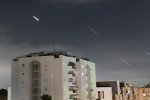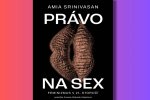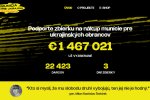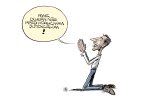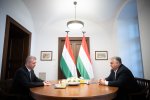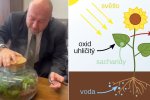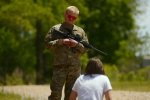Estonian National Museum is an exceptional and successful project
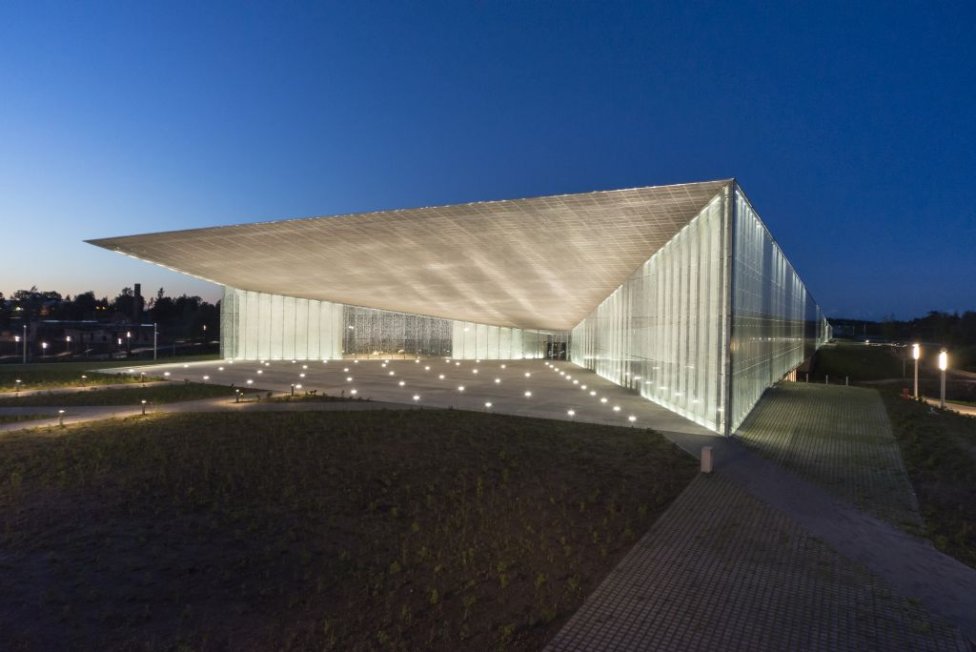
Can you visit an exhibition with a stroller, a wheelchair or with hyperactive children? All that is welcome in Estonian National Museum in Tartu. Its collection shows that this North-European country has taken a positive view of its history.
Many doubted this plan from the beginning. “Building the national museum in a different city than in the capital?” asked perplexed people in Tallinn and Brussels in disbelief. The Estonians didn´t give up, they secured necessary money without the European Union and they built the Estonian National Museum in Tartu.
The place is unusually crowded in the early afternoon. Visitors stand in a row at the box office; others are gathering around Estonian and Latvian guides. An open space in front of the entrance to the exhibition is packed, and that is the moment, when I start thinking about the main building of the Slovak National Museum in Bratislava, which would be deserted at noon. It is a regular working day.
„Do you always have it like this?“ I ask Kaarel Tarand from the museum. He smiles at my question as if he heard it rather often. Shortly afterwards he mentions 25,000 visitors per month.
The Spiš Museum as the most visited exposition of the Slovak National Museum, which also includes the Spiš Castle–part of the UNESCO World Heritage List, was visited by only 24,000 persons per month the last year. Estonian National Museum is miles away from the Slovak one. And not only geographically.

No centre, no capital
Imagine, for example, that the Slovak National Gallery, which is currently under reconstruction, would have been built in Kosice instead of Bratislava. Now, forget about the city centre of Kosice and its historical and lively Main Street. Imagine a district at least two kilometres away from the centre. Let’s say the neighbourhood of lower Bankov. All these ideas were brought together in Tartu, the second biggest Estonian city of 100,000 inhabitants, where an impressive glass building on the outskirts of the city were built.
What would have been condemned for the lack of access anywhere else, was probably the most important thing in this Estonian city. The National Museum is situated on the territory of a former manor house, where exhibitions of art were held between the two world wars. However, the mansion was destroyed in 1944 during the fighting between the Soviet and the German army.
The Estonian Museum at the same time occupies the area of a former military base used during the Cold War by Soviet strategic bombers. Protective revetments and the remains of taxi-way can be still seen from windows of the museum. This place has been probably the greatest symbol of a hated occupation for citizens of the old university town of Tartu.
The idea to build a national museum in Estonia dates back well into the past. Assembling and displaying dispersed historical collections under a single roof was a desire of Estonians since the regaining of independence in 1991. But the problem was how and where to build the museum.
„We missed the money, we were a young state,“ says Tarand about the first years of freedom in the 1990s. „It was planned to build a theatre, then an academy, a gallery, and after all it was planned to build a museum.“

They remained optimists
Finally, Estonians organised an architectural design competition for the building of the future museum in 2005. It was won by an international trio of architects – Italian Dan Dorell with Israeli roots, French Lina Ghotmeh with Lebanese ancestors and Japanese Tsuyoshi Tane, who all worked together in London at that time. This choice caused a little uproar in Estonia, because many people thought that the National Museum should have been designed by Estonians.
The construction process was also made more complicated by the economic crisis in 2008 and by the European Union, which was supposed to help Estonians financially. However, Brussels revoked its commitment due to placement of the museum in Tartuand distance from the city centre.
„Tartu has always been the city of the national movement,“ told me Tarand, when he explained the selection of the old university city of Tartu. „It has been the political and cultural centre of the country long before it moved to Tallinn. Tartu is the most Estonian city today, with 85 per cent of its citizens being Estonians, while in Tallinn it’s only 55 per cent.“
But Estonians managed to overcome these problems. They were able to raise the money and finish the construction works in 2015 at the cost of more than 70 million euros.
„We were always optimistic,“ says French architect Lina Ghotmeh about the period when the construction was prolonged. „We believed that the team working on the museum will find the solution.“
In effect, a glass building, measuring 355 meters, was built in a remote location. Its walls are designed to reflect the surrounding trees and snow — two great symbols of Estonia hidden in its flag too.
„Glass is like a cover of the museum. It’s put on its body, which is mainly concrete,“ explains Ghotmeh. „This opens the dialogue between the building and its environment. The building thus invites the landscape to interfere with its surface. “
The visitor of the museum can also notice on the way to the building that the roof of the Estonian National Museum is gradually raising from the ground towards the main entrance, which is turned towards the city with a foresight. The back of the museum simultaneously blends into a tarmac of the former air force base.
„I am really moved by the fact that the Estonians are proud of this building,“ says Ghotmeh. „It is as if the project started a new city life in that area.“
People from the management of the museum count on that as well since they believe that the city will expand to this distant area in the future.

Everyday life and occupation
The result of the project is thus a combination of patriotism and the orientation towards the outside, of the folk culture with modernity. The building was opened the last October, and it was designed by an international team of architects. It is modern, geometrically strict and angular.
But inside, there are the curved walls which hide the objects from everyday life of Estonians—folk costumes, woven carpets or old books.
The first collections of the museum date back to the late 19th and early 20th century, when a thousand volunteers walked through towns and villages of Estonia to collect folklore texts and artefacts. Later, these were updated with exhibits illustrating the changes that the country had to pass through in the 20th century. You can find there, for example, medals of pilots, or military material from the former air force base, which was fenced off by barbed wire during the previous decades and inaccessible to the local citizens.
The Soviet occupation is made even more vivid by part of the border installation from that period. The visitor has to cross this border as he or she is passing through the exhibition from the present to the past.
A limited collection of literature translated into Estonian shows another aspect of the Soviet regime, when Moscow sought to suppress the intelligentsia and forbade Estonians the opportunity to study.
„We do not want to teach visitors what’s good or what is not,“ explains Tarand. „Our pursuit is to show them history and events from multiple points.“
The visitor will also see a small lawn mower. It was a scarce commodity during the time of the USSR, and so the owner made it by himself with a little bit of improvisation. He used a baby stroller, an engine from the washing machine and a bucket.
Resistance to the Soviet regime is shown by the collection of photographs documenting the Baltic Road in 1989, when more than two million people in three Baltic countries created a human chain to express their desire for freedom.
„In the future, we would like people to find and tag themselves or their family,“ explains Tarand when he taps on the screen and shows me a collection of photographs, on which one can see people holding their hands from Tallinn through Riga to Vilnius.

eEstonia
Estonians are often adding one more „e“ in front of their country’s name in English, just like in the Estonian version of the name of their state—Eesti.
That is because Estonia is a pioneer in electronics and new technologies, which is also visible in the National Museum. For example, there is a chair at the beginning of the exhibition, on which Estonian programmer Jaan Tallinn sat when he created Skype in the early 2000s.
Any visitor can also scan his or her dress and then to listen in a section with folk costumes and carpets, how it would have sounded like, if it had been transcribed into a melody. One of the hundreds of interactive screens then shows the population movements recorded thanks to mobile phone signals during national holidays or festivals.
Basically, you find out what does eEstonia mean already when you buy a ticket. You get a card at the box office, which you can then draw to small screens with descriptions of exhibited artefacts. The text will automatically appear in the language you’ve selected at the box office. Besides Estonian and English, there is also Russian and Finnish.
„In the future, we would like to translate all the text into every language of the European Union,“ Tarand says, but he emphasises that it is physically and financially difficult because it is more than 500 pages of text. However, he believes that the presidency of the Council of the EU, which Estonia will take over next month, can also help the museum in this.
„Within a year, we would like to create a new card for visitors, which will allow them to download both the text and photos,“ explains Tarand. „We want visitors to take this museum home.“
A bit different museum
When the museum staff moves around us on scooters, Tarand promptly explains that the Estonian National Museum is a little bit different compared to other museums in Europe. And you can see that in every part of the exposition.
A young couple is pushing a baby stroller here, and somewhere else another visitor moves around comfortably on the wheelchair. There is no security service, and there are many children everywhere. All of them test plenty of exhibited artefacts and they can usually understand how things work even before the adults do.

„Everything is allowed here,“ says Tarand. „We want people to feel free.“ And it is visible by the feedback that is only positive.
„We didn´t want a museum where visitors would think that they will not come back here. Quite the contrary, we wanted them to come back with a joy,“ he explains. „We wanted to make an exhibition, which would be interesting to them. For that reason, there are movies, documents, installations, interactive things.“
The lower floor of the museum, for example, is devoted to Finno-Ugric languages, where, besides Finnish and Hungarian, belongs also Estonian. The relationship between these languages is explained by several words linked with each other through branches of a huge tree projected on a white wall.
You can also go through four seasons in couple of minutes and, in addition, meet the ancestors of today’s Estonians by visiting their huts, saunas or by watching a cartoon about folk traditions.
Patriotism, however, is most visible in a room with only the enormous first Estonian flag on display. Students from the University of Tartu created it at the end of the 19th century.
The Estonian flag was forbidden during the time of the Soviet occupation, and many of those which are currently hanging from the windows of Estonian homes were preserved only because Estonians carefully hid them similarly like the very first one.

Yet the Estonian National Museum is not about heroes. It is about ordinary people who were often very brave. Indeed, the idea of this museum built in the middle of nowhere is the best proof of that.
„Estonia is a free country today and we got back everything we had lost. And mostly, we survived,“ says Tarand. „Today we have opportunities like any other state. And that’s exactly what we want to show here.“
The museum still invites Estonians to contribute to its collections by their own objects. „We are not at the end yet, we have not completed our collections,“ Tarand laughs when he takes me out of the museum.
Máte pripomienku alebo ste našli chybu? Prosíme, napíšte na [email protected].

